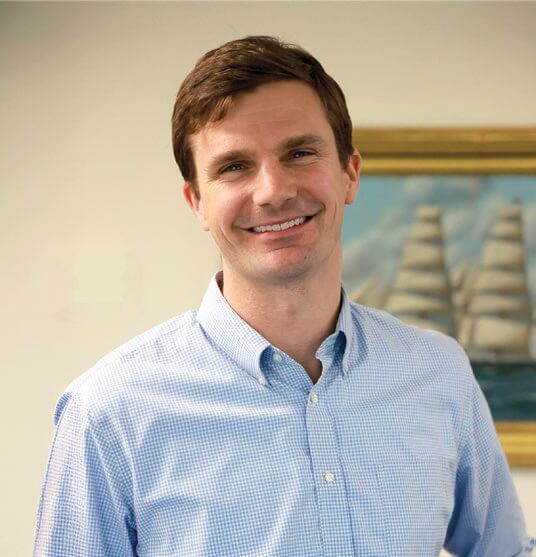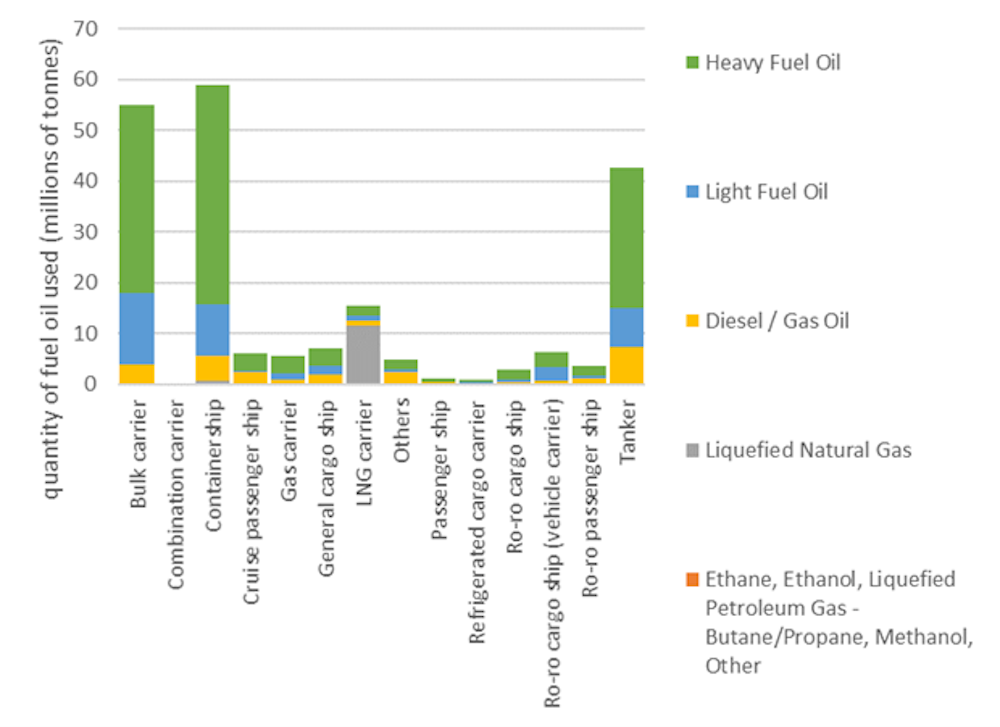 Charles B. Robertson is the President and CEO of river cruise leader American Cruise Lines, and he recently spoke to TME editor-in-chief Tony Munoz about the company's history and his own journey as an executive.
Charles B. Robertson is the President and CEO of river cruise leader American Cruise Lines, and he recently spoke to TME editor-in-chief Tony Munoz about the company's history and his own journey as an executive.
Welcome, Charlie! Tell us about yourself – how you grew up and prepared to one day run the family business.
It's been a lifelong preparation, really. I literally grew up with the company, which my parents started before I was born. We were in the dinner and excursion boat business back then on the Connecticut River and they were just getting back into the overnight cruise business.
I grew up on the boats, and it was a unique childhood. I fell in love with the business before I ever knew it was a business or that it had a lot of growth potential. It was just a great thing to do in the summers and on weekends during the school year. I have two brothers and they were the same way. We all kind of found different niches in the company.
Where did you go to school? Did you go to one of the maritime academies?
No, I went the standard college route and have a little bit of Ivy in me, but not so much that I forgot how to work. Like a lot of people in the company, I went to the "School of American Cruise Lines."
Cool. Tell us about your Dad. He was a legend in the industry and in many ways the founder of river cruising in America. What was his vision in founding the company? How did it all start and work? He was way ahead of his time.
Yes, he really was. He was a pioneer. He was a fighter, and he fought for whatever he believed in. He was sort of fortunate to find maritime and the cruise business back in the Seventies, long before the cruise industry had taken off in any material way. He had been a captain on ferries, so he knew what he was doing around boats, but he didn't have any business background.
Give us a brief overview of the company and how it evolved over the last 50+ years.
My parents started American Cruise Lines in 1973, but they were more about shipbuilding until 2000 when the cruise line started taking off. They had one ship in 2000 and a second ship in 2003. They were each only 49 passengers. So we were a really small company when I was in high school and working on the boats. Everybody did everything back then and we just grew organically, slowly expanding into the fleet of ships that we have today.
How many ships do you have now?
We have 21 and nine more under construction.
Do you and your brothers own the company?
We do. We're a hundred percent family-owned and love it that way. It keeps us very nimble. It keeps us very grounded, and we care unbelievably about the company. It's pretty unique. We love being private and have a lot of fun with it. I mean, we can really manage the business the way we think is best.
That family feeling extends to the ships and is part of why people love our product so much. Even though it's now a sophisticated environment onboard, it still feels family-like. The way people get to know one another, passengers among themselves and passengers and crew, is very genuine. The whole operation, from the way we run excursions to cocktail hours and onboard entertainment, is designed to be about one another and the experiences we share in extraordinary places.
Wow, very cool! Who came up with the cocktail hour idea?
My parents did. We've had them from the beginning, and that nightly event is so important to the camaraderie onboard. We're absolutely adamant not to have any point-of-sale displays on board. There's no cash registers on board. There's no traditional separation that you would have between the person serving you and the guest. Everything's free. It's all premium drinks and high-end hors d'oeuvres, and everything is face-to-face. It's a very genuine, family-like experience. And that's what we want to create.
Tell us about your employees. How many do you have and where do they come from? How do you train them?
We have about 2,500 and they come from all 50 states. They're all Americans, and they all go to our facility in Salt Lake City for training. They get a very consistent training program there and are then deployed around the fleet.
People can come in without any real experience, get trained and then get started in deck or housekeeping or food service roles and grow with us. Some of our best managers have been hired on after their initial employment period with us as a server, for instance. They come back and they do great because that's how most of us got started.
I joke that I went to the School of American Cruise Lines, but so many of our executives did the same thing. We started our careers here and grew. So you see this really interesting longevity and progression in people's careers that's rare in many companies.
What about the mariners and deck officers? They went to the academies, correct?
They come from the academies, the oil patch, and out of the military, but we also make a lot of officers. Take someone young who's never been at sea before. They can get on board as a deckhand with us, build their time in getting a license – we'll put them through a licensing program – then they can apply to be a mate. And that's actually the track I took myself, but later shifted into the office.
Are you a captain?
I am, but I don't sail as a captain. I have the license for it, but I respect the position too much to make myself captain. It takes years of experience at sea to truly be able to handle any situation. As much time as I've spent on board, I don't have that yet. I'm a well-qualified mate and would sail as a mate.
Tell us about the shipyard – Chesapeake Shipbuilding. When did that come along?
It was around 1980, and it's sort of the most fun part of the business. We were, in a way, shipbuilders first. My Dad had worked in shipyards, and when he started his own business he wanted to build his own ships. My parents found the shipyard property that we have now in Salisbury, Maryland. At the time, it was just an abandoned piece of industrial property – abandoned after World War II – but it had the right bulkhead to build on.
It's taken off a lot from there, even in just the last few years. We now have hull fabrication buildings. We have plasma tables, robotic welding equipment, all these different things that really allow us to build ships at the pace we are now. We also have a team of Marine engineers and naval architects on staff who design everything we build.
As the operator, builder, and designer, we have a seamless communication flow between the operational wish list and the construction reality. Understanding both the operation and the construction really helps us see how each ship can be better and how the latest technology can be incorporated into the design.
Each ship is designed specifically for its region in the U.S. with its bridges, its lock systems, its water depths, but also in a regulatory sense. They comply with the latest Coast Guard and EPA requirements in a way that no other passenger vessels in the world really have to. We're very proud to be pioneering this application of technology in some of the most environmentally sensitive areas in the country.
Who's your target demographic? Who are the people you market to?
Our market is older, affluent Americans. Well-traveled people. They're often cruisers who've been around the world. Now they want to explore their own backyard a little bit, and they want to relax. They want to learn something. They want to move on from the mass luxury that exists around the hospitality space generally to a more intimate, sophisticated atmosphere.
Our product is designed to appeal to that luxury traveler and provide them a venue and an experience they would never expect to find in the U.S. I mean, it's unbelievable to be in a luxury hotel cruising through the Snake River canyons or the Ohio River locks. It's just an extraordinary experience. We're really creating these domestic cruise markets and adding routes that no one's done before.
So, our marketing program is as robust as it is because we're really educating people that you can get a ship into these places and you can have an experience that you thought was only available on European riverboats. It's as much about education as it is about promotion. And it works because we bring people who graduate from other areas of the cruise industry and move into our product.
We have a local expert on every cruise, usually a historian of some kind who has a real background in the region we're visiting and gives daily presentations on each destination. We feature local cuisine and local wines and local entertainment. We also offer at least three different shore excursions at each stop. So passengers are immersed in the history and culture of the region.
What's your biggest challenge right now? What keeps you up at night?
What keeps me up at night is all these ships running. We have people at sea and we have machinery running 365 days a year. And that means we always have to stay sharp. We always have to be prudent in our operations and always have to be ready for whatever comes next. Growth is also a challenge, but it's a blast and we just want to keep absorbing all the potential we see in the market.
Awesome. Any final message for our readers?
"Small Ship Cruising Done Perfectly" – that's been our slogan from the beginning and it's a fantastic slogan because perfection is a high bar. You can always be better. It forces you to keep evaluating yourself, keep changing, keep trying to be better. It also speaks directly to our mission to share America's story on the finest American ships.
Tony Munoz is The Maritime Executive's publisher and editor-in-chief.


 Charles B. Robertson is the President and CEO of river cruise leader American Cruise Lines, and he recently spoke to TME editor-in-chief Tony Munoz about the company's history and his own journey as an executive.
Charles B. Robertson is the President and CEO of river cruise leader American Cruise Lines, and he recently spoke to TME editor-in-chief Tony Munoz about the company's history and his own journey as an executive.